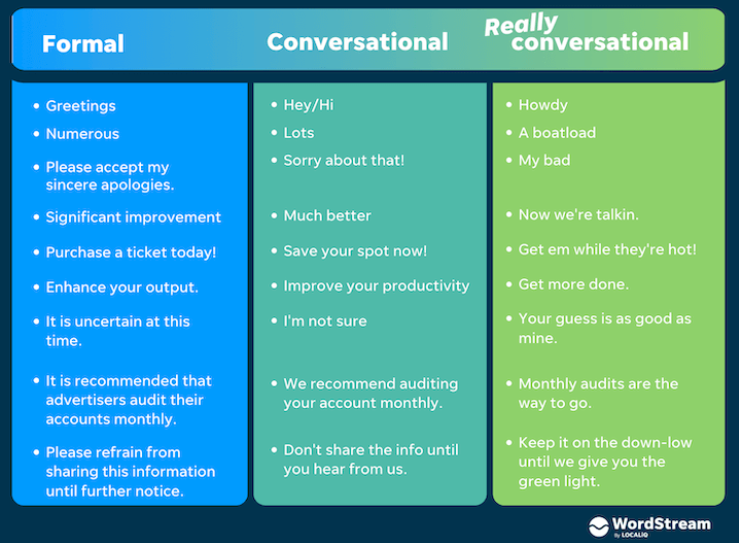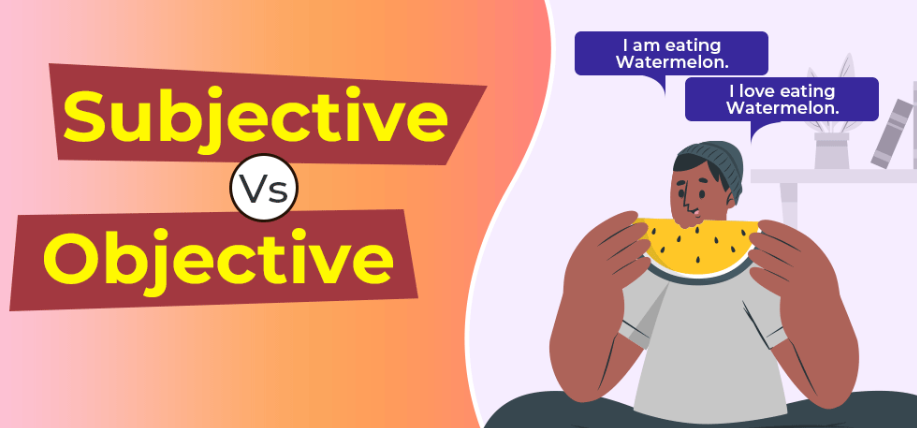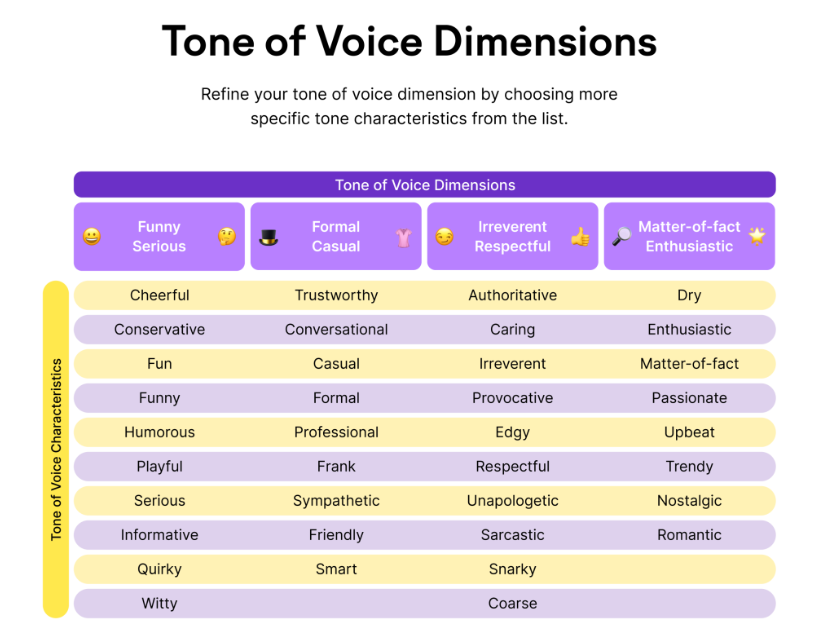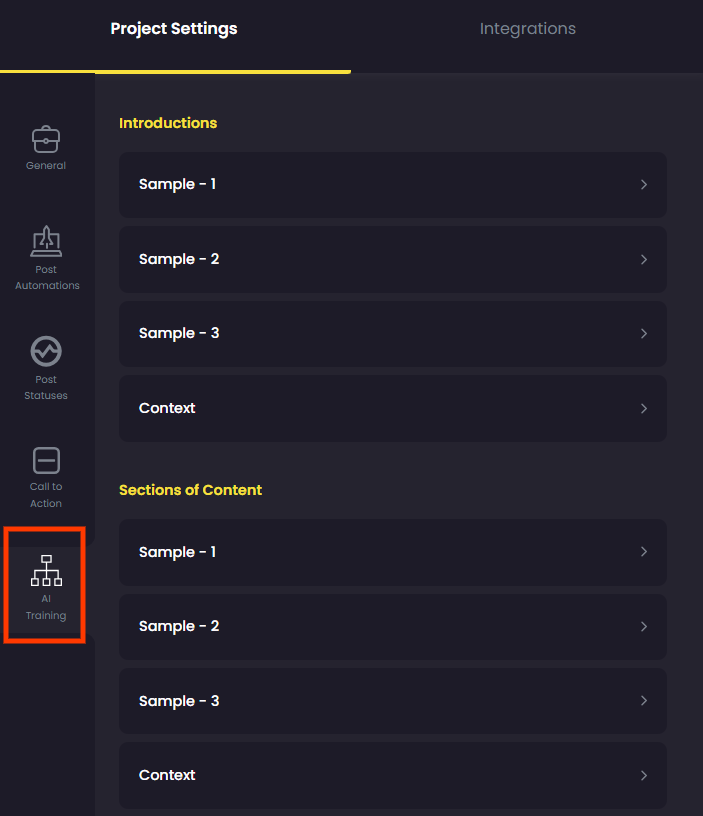Ever tried to crack a joke, only to be met with blank stares? It’s all about tone. Just like in conversation, tones in writing can make or break your message.
You’ve penned an article you’re proud of. You’ve polished each sentence until it gleams. Yet, when you post your article online, there is no response.
No likes. No comments. Nothing but crickets.
The problem isn’t your grammar or spelling – it’s your tone! Writing for an online audience needs more than just perfect punctuation; it requires the right tones too.
Intrigued? Stick around and we’ll discuss everything you need to know about tones in writing — from formal to sarcastic tones — and how they can transform your content from bland text on a screen into words that resonate with readers!
Table of Contents:
- What is Tone in Writing?
- Why Are Tones in Writing Important?
- How Does Tone Affect The Reader?
- Formal Tone
- Informal Tone
- Humorous Tone
- Sarcastic Tone
- Objective Tone
- Emotional Tone
- FAQs – Tones in Writing
- Conclusion
What is Tone in Writing?
Tones in writing, just like in conversation, can greatly influence how we connect and engage with readers. It’s not what you say but how you say it that often matters most.
In a nutshell, the tone of writing reflects an author’s attitude towards their subject and audience. Think about it as if it were music — different genres create distinct moods or feelings. Just like a melancholic blues song stirs up certain emotions compared to an upbeat pop track, so too does your tone shape how readers interpret your message.
For instance, tones in writing are a lot like vocal inflection: the sound your voice makes that conveys a specific emotion, like sincerity, irony, desperation, or even anger. But instead of relying on sound waves reaching our ears (as when someone speaks), written text must use language to achieve these effects.
Why Are Tones in Writing Important?
The tone of your writing can greatly influence how your readers interpret and react to your content. It acts as the voice of your written words, setting the mood for your readers and providing context that helps them understand what you’re trying to say.
A persuasive tone, for instance, can help convince a reader about a particular argument or viewpoint. This type of tone makes use of strong language, powerful evidence, and compelling reasoning to sway the audience’s opinion in favor of the writer’s perspective.
In contrast, using a sarcastic tone might not always be beneficial. While it may add humor or irony to some situations, it could also potentially undermine your credibility if used excessively or incorrectly — causing readers to lose faith in you.
Different tones can also reflect different aspects of a writer’s personality and style.
For example, a humorous tone uses wit and comedy elements which make reading more enjoyable while keeping audiences engaged with its light-hearted approach. On the other hand, a formal tone employs academic language and structure that lend authority to content — making it appear credible and informative when conveying complex concepts or research findings.
You need not stick rigidly to one style throughout all your pieces. Flexibility is key. Whether formal for academic essays or casual for blog posts depends largely on who will read your work. An inappropriate tone might confuse them more than anything else, so make sure there’s congruence between topic matter, audience expectation, and your chosen expression.
How Does Tone Affect the Reader?
The tone of writing is a vital aspect that can shape how readers interpret your message. Tone can convey emotion, attitude, and personal perspective. But more than this, it directly impacts the connection between you and your audience.
Tone significantly influences how a reader perceives both you as a writer and the topic at hand.
For instance, if we adopt an empathetic tone while discussing sensitive topics like mental health issues or loss, our readers are likely to feel understood and safe. This fosters trust, which is crucial in building long-lasting relationships with our audience.
However, using the wrong tone of voice at the wrong time can make you seem insensitive to delicate topics.
Tone plays a decisive role in determining whether your audience will respond positively or negatively to what they read. If done right, even controversial viewpoints presented in a respectful and thoughtful tone can encourage healthy discussions.
Now let’s proceed to the heart of the matter — the different tones in writing.

The tone of writing refers to the feeling your content evokes in the reader
Formal Tone
The formal tone is a style of writing often associated with academic, professional, and official communication. It’s like the black-tie event of the writing world: polished, sophisticated, and refined.
This style typically avoids colloquial language or slang, instead favoring precise vocabulary and complete sentences to maintain clarity.
At times, this tone of voice may seem somewhat distant; however, it doesn’t have to be. For example, it’s possible to be both formal and warm, or formal and empathetic.
A hallmark feature of formal tone is its strict adherence to grammatical rules and avoidance of contractions (for example, “do not” instead of “don’t”). But there’s more than just grammar involved.
Sentence structure plays an important role, too — complex sentence structures are favored over simple ones as they convey more information in each statement. This makes your text seem authoritative because you’re providing detailed insights rather than quick snippets.
When to Use a Formal Tone in Writing
The formal tone is ideal for occasions where professionalism, respect, and clarity are paramount. Here are some instances when to use a formal tone of writing.
Academic Writing
When writing essays, research papers, or academic reports, a formal tone is essential. It demonstrates your understanding of the subject matter and respects the scholarly context. Use third-person pronouns (e.g., “he,” “she,” “it”) instead of first-person (e.g., “I” or “we”) and avoid contractions (e.g., “cannot” instead of “can’t”).
Professional Correspondence
In business emails, letters, or memos, a formal tone is vital to maintain professionalism. Address recipients by their titles (e.g., “Dear Dr. Smith”) and use appropriate salutations and signatures. Avoid using slang, emojis, or overly casual language.
Legal and Official Documents
Formal language is a must in legal contracts, agreements, and official documents. Clarity and precision are paramount here to avoid misinterpretations that could lead to legal issues.
Job Applications and Resumes
When applying for a job or writing a resume, maintain a formal tone. Clearly articulate your qualifications, skills, and experiences. Avoid using overly personal or informal language.
Academic or Business Presentations
Whether you’re giving a presentation in a classroom or a boardroom, a formal tone is expected. Use clear, concise language and avoid slang or colloquialisms.
Technical Writing
In technical manuals, reports, or instructions, a formal tone helps ensure that information is communicated accurately and clearly. Avoid ambiguity and use precise terminology.
Serious Topics
When discussing sensitive or serious subjects such as politics, ethics, or social issues, a formal tone can help maintain a respectful and thoughtful discussion. It can also prevent misunderstandings or offense.
Client or Customer Communication
When communicating with clients or customers, a formal tone can convey professionalism and trustworthiness. It’s especially important in fields like finance, law, or healthcare.
Educational Materials
When creating educational materials such as textbooks or online courses, a formal tone is typically used to convey information clearly and authoritatively.
Official Reports and Proposals
Reports for government agencies, proposals for funding, or project reports for stakeholders should maintain a formal tone to ensure professionalism and credibility.
Using a formal tone in the right context can help you convey your message effectively and establish credibility and professionalism. In contrast, informal tones are more appropriate in casual communication, such as texts to friends, personal blog posts, or creative writing.
Informal Tone
An informal tone is like a friendly chat with your buddy over coffee. It’s relaxed, easygoing, and feels more personal. This type of tone facilitates a more open dialogue between the writer and reader, creating an atmosphere that feels like two people chatting. Think about texting your friend about the latest movie you watched or an exciting trip you’re planning.
You might use contractions (like “don’t” instead of “do not”), slang words or phrases (like “hang out” or “cool”), and even emojis in certain contexts. The goal here isn’t to follow strict grammar rules but rather to communicate effectively in a manner that resonates with readers.
When to Use an Informal Tone in Writing
Imagine your content as a dinner party. Using an informal tone is like inviting guests into your home for comfort food — it creates warmth and intimacy. This can help create loyal audiences who feel connected on a deeper level because they see you less as a distant corporation and more human-like entity.
Using an informal style and tone in writing is suitable for various situations where a conversational, relaxed, and friendly approach is appropriate. Here are a few informal tone examples.
Personal Communication
When writing to friends, family members, or close acquaintances, it’s entirely appropriate to use an informal tone. This includes text messages, personal emails, and handwritten letters.
Informal Reports and Updates
When providing progress reports or updates within a casual or small team setting, an informal tone can be more engaging and relatable. It can make the information more accessible and less intimidating.
Casual Blogging
If you maintain a personal blog or write online content meant to be conversational and relatable, an informal tone is often preferred. It helps you connect with your audience on a more personal level.
Blogs often use this style since it fosters engagement by encouraging comments from readers.

The Self blog is a great example of using an informal tone in writing.
Social Media Posts
Likewise, social media posts benefit greatly from being written informally due to their interactive nature.
Platforms like Twitter, Facebook, and Instagram allow you to engage with your followers through emojis, hashtags, and a conversational tone.
Creative Writing
In fiction, poetry, or creative nonfiction, an informal tone can be used to convey character voices, emotions, or personal perspectives. It allows for more artistic expression.
Marketing and Advertising
Depending on the brand and target audience, some marketing materials may benefit from an informal tone to create a sense of familiarity and connection with customers. This approach is often used by brands targeting younger demographics.
Email marketing campaigns also often lean towards informal tones since personalized emails are known to improve click-through rates by 139% compared to generic emails.
Product Descriptions
Product descriptions can benefit from a touch of informality. By adding some personality to the description, it becomes more relatable and engaging.
Informal Essays or Personal Narratives
When writing personal essays or narratives that involve your own experiences and reflections, an informal tone can make the writing more relatable and engaging.
Online Forums and Communities
When participating in online forums, discussion boards, or social media groups, adopting an informal tone can help you connect with other users and foster discussions.
It’s important to note that while informality can be effective in these contexts, it should still be used with consideration for the audience and purpose of your writing. Even in informal writing, it’s essential to maintain clarity and respect for your readers. Avoid using offensive or inappropriate language, and be mindful of the tone you adopt based on the expectations of your audience.
Using proper grammar is also critical to make sure you stay on brand and are seen as a reliable source. Proper use of exclamation points and commas can make all the difference in how your content is read and absorbed.

Formal vs. Conversational vs. Super Casual Tone
Humorous Tone
A humorous tone can be a powerful tool in your writing arsenal. It’s like the secret sauce that makes your content more relatable, engaging, and memorable. But remember, it’s not necessarily about cracking jokes but rather subtly adding wit to make reading enjoyable.
Imagine this scenario: You’re trying to explain a complex topic such as SEO or quantum physics. Why not throw a little humor into the mix?
“SEO is so confusing that even Google needs an algorithm to understand it.”
“Quantum physics? More like quan-fun physics.”
See what we did there?
When to Use a Humorous Tone in Writing
Adding humor to your writing can be a great way to engage your audience, entertain them, and lighten the mood. Here are specific situations when a humorous tone works.
Entertainment Writing
If you’re writing comedy scripts, humorous articles, satire, or humor-focused books, a humorous tone is not only appropriate but expected. Your primary goal is to make readers laugh or smile.
Speeches and Presentations
In public speaking, using humor can be an effective way to connect with your audience and keep their attention. Anecdotes, funny stories, or witty remarks can be used strategically to break the ice or illustrate a point.
Social Media
Platforms like Twitter and TikTok thrive on humor. Crafting funny and shareable content can help increase your social media engagement.
Instructional Content
In some cases, especially when teaching or explaining complex concepts, using humor can make the content more approachable and memorable. Just ensure that the humor doesn’t overshadow the educational message.
Advertising and Marketing
We’ve seen brands harness the power of humor successfully for their content marketing strategies. Take Wendy’s for instance — their witty and sarcastic tweets have become a sensation on social media. It not only gets them noticed but also increases user engagement significantly.

The takeaway? Be bold, be funny. Make your readers chuckle while they consume your content. Who doesn’t appreciate a hearty chuckle when perusing written material?
While humor can be a valuable writing tool, it’s important to exercise caution. Not everyone shares the same sense of humor, and what is funny to some may be offensive to others. Be mindful of cultural sensitivities, avoid jokes that could alienate or hurt your audience, and consider seeking feedback from others to ensure your humor lands appropriately.
Sarcastic Tone
Oh, sarcasm. It’s not just the spice of life; it’s a potent flavor in writing, too. The sarcastic tone is all about saying one thing but meaning another. But let me be clear, this isn’t deception or dishonesty — it’s irony with a twist.
The beauty of using sarcasm lies in its double-edged nature. One edge cuts through boredom and predictability, while the other makes your reader pause for that “aha” moment as they decode what you really mean.
Sarcasm, often marked by witty remarks and sharp comments, can add depth to characters when used correctly in storytelling or create memorable punchlines in articles and blog posts. Yet, beware. Too much may lead readers to find your work cynical or even offensive.
When to Use a Sarcastic Tone in Writing
While sarcasm can be a powerful rhetorical device, it should be used sparingly and carefully in writing due to its potential to be misunderstood or come across as offensive. Here are specific forms of writing when sarcasm works.
Satire
Sarcasm is frequently employed in satire to criticize or mock something, such as societal norms, political figures, or cultural practices. Satirical writing uses sarcasm to highlight absurdities or inconsistencies.

The Onion is a great example of a news outlet that publishes satirical writing.
Opinion Pieces
In editorial or opinion articles, a touch of sarcasm can be used to underscore a point or criticize a stance. However, it should be applied judiciously to avoid alienating readers who may not appreciate the tone.
Humorous Writing
In humor pieces, comedic essays, or satire websites, sarcasm is often a primary tool for creating humor. It’s used to exaggerate or ridicule situations or ideas for comedic effect.
Cultural Commentary
When discussing cultural trends, behaviors, or stereotypes, sarcasm can be employed to highlight the absurdity or contradictions in these phenomena.
Review and Critique
In reviews of products, movies, books, or services, sarcasm can be used to emphasize flaws or shortcomings, although it should be tempered to maintain professionalism.
Social and Political Commentary
Some social and political commentators use sarcasm to draw attention to hypocrisy, double standards, or problematic behavior in society or government.
Despite these contexts, it’s crucial to exercise caution when using sarcasm in writing, as it can be easily misunderstood, especially in the absence of vocal cues and facial expressions.
Also, be aware of cultural differences that may affect how sarcasm is perceived and received. Not everyone around the globe interprets it in the same way — so when in doubt, play it safe.

Objective Tone
An objective tone of writing is a tool that allows you to present information in an unbiased, fact-based manner. This tone can be quite useful when conveying data or discussing sensitive topics. By removing personal bias and focusing on facts, we give our readers reliable content they can trust.
For instance, imagine reading about climate change from two different sources. One uses emotional language filled with doomsday predictions, while the other provides clear data with actionable steps for reducing carbon footprints. The latter would be using an objective tone – it doesn’t appeal directly to emotions but instead presents evidence without dramatic flair.
To stay objective, you should focus on facts. Instead of saying “I think” or “I feel,” use phrases such as “The research shows” or “According to studies.” This shift moves away from subjective interpretations towards presenting verifiable truths.
You should also choose neutral words and avoid charged language that may indicate bias one way or another.
Finally, cite credible sources. Including references not only strengthens your argument but also lends credibility and reliability because it demonstrates respect for others’ work.
When to Use an Objective Tone in Writing
Using an objective tone in writing is appropriate when your goal is to present information, facts, or an unbiased viewpoint without personal opinions, emotions, or subjective language.
Here are a few objective tone examples:
News Reporting
Objective language is crucial in journalism. News articles should present facts and events without bias or personal opinion, allowing readers to form their own conclusions.
Academic Writing
In academic papers, essays, and research reports, maintaining an objective tone is essential. Your goal is to present data, research findings, and analysis without personal feelings or bias. This style of writing will often require the use of primary and secondary sources to back up your article.
Reference works like encyclopedias should provide objective, factual information without personal opinions or interpretations. Paraphrasing resources is acceptable, which will keep the tone on key for the academic community.
Historical Writing
Historians strive for objectivity when writing about past events. Their goal is to present historical facts and interpretations based on evidence rather than personal feelings.
Scientific Writing
Scientific articles, lab reports, medical records, and healthcare guidelines should be written objectively to convey experimental results, methodology, and conclusions accurately.
In reviews of scientific literature or critiques of research studies, an objective tone allows for a fair assessment of the work’s strengths and weaknesses.
Technical Documentation
User manuals, instruction guides, and technical reports should use an objective tone to ensure clarity and precision in conveying information.
In businesses and organizations, standard operating procedures (SOPs) must be written objectively to ensure consistency and clarity in processes and protocols.
Business Reports
When preparing business reports, especially for decision-makers, an objective tone helps present data, market analysis, and recommendations without personal bias.
Legal Documents
Legal contracts, court filings, and legal opinions require objectivity to ensure the language is clear and that the document’s intent is not influenced by personal opinions.
Comparative Reviews
When writing product or service reviews, an objective tone is critical. Present the facts, features, and pros and cons without personal bias, allowing readers to make their own judgments.
In these situations, an objective tone helps establish credibility, maintain professionalism, and allow readers to trust the information being presented. It’s essential to avoid emotional language, personal judgments, and subjective statements when striving for objectivity. Instead, focus on presenting facts, evidence, and logical reasoning in a clear and impartial manner.
Remember, achieving objectivity doesn’t mean draining all personality from your writing. You still want it engaging enough so readers don’t lose interest halfway through.

How one word can turn your objective tone into a subjective tone
Emotional Tone
An emotional tone in writing can be a powerful tool. It has the potential to evoke strong feelings within your readers, making them connect more deeply with your content. But what exactly is an emotional tone?
In essence, it’s the mood that you set through your choice of words and sentence structure. Words like affection, cheerfulness, or anticipation can bring forth upbeat sentiments, while expressions like distress, anxiety, or rage often evoke unfavorable reactions.
You could use an emotional tone to stir up excitement for a new product launch by expressing your own enthusiasm. Or you can tap into empathy when discussing sensitive topics by showing understanding and compassion.
Here are a few emotional tone examples:
“We’re thrilled to introduce our latest creation, a true labor of love.”
“It was a difficult decision, but unfortunately, we had to discontinue some beloved products.”
“Don’t miss out on our one-time offer!”
All these examples give different vibes due to different word choices. By consciously choosing your words based on desired emotions, you can make sure that readers feel what you want them to feel.
When to Use an Emotional Tone in Writing
Using an emotional tone in writing can be a powerful way to connect with your audience, convey empathy, and evoke specific feelings or responses. This tone of writing is perfect for:
Personal Narratives
When sharing personal stories, experiences, or reflections, using an emotional tone can help readers connect with your feelings and relate to your narrative on a deeper level. It adds authenticity and depth to your writing.
Creative Writing
In literature, poetry, and creative nonfiction, an emotional tone is often used to elicit strong emotions in readers and create a more immersive and evocative reading experience.
Persuasive Writing
In persuasive essays or speeches, appealing to readers’ emotions (pathos) can be highly effective. Emotional appeals can help sway opinions and motivate action by tapping into empathy, sympathy, or shared values.
Charitable Appeals
When writing for fundraising campaigns, using an emotional tone can be powerful. It helps donors connect emotionally with the cause and feel compelled to contribute.
Inspiration and Motivation
In self-help books, motivational speeches, or articles aimed at personal development, an emotional tone can inspire and motivate readers to make positive changes in their lives.
Obituary and Eulogy
Expressing emotions is appropriate in writing obituaries and eulogies as it helps convey the significance of a person’s life and the grief or loss felt by others.
Memoirs
In autobiographical works, memoirs, or biographies, an emotional tone can reveal the inner thoughts, struggles, and growth of the subject or author.
Crisis Communication
In times of crisis or emergencies, an emotional tone can convey compassion, reassurance, and a sense of urgency to the audience.
It’s important to note that when using an emotional tone in writing, you should consider the appropriateness of the emotion for the context and your audience. Be genuine in your expression of emotions, avoid over-dramatization, and use emotional language responsibly.
Additionally, be mindful of cultural and individual differences in how emotions are expressed and perceived.
Emotional tone can be a double-edged sword. It’s essential not to manipulate your readers’ emotions but rather to help them connect authentically with what you’re saying.

Trying to find your brand voice? Here’s how.
Finding the right tone is a crucial step when communicating with your audience. A carefully chosen tone helps establish your intention and sincerity, fostering trust and understanding. On the contrary, the wrong tone may lead to misunderstandings, misinterpretations, or even alienation, diminishing the overall effectiveness of your message.
Grammar plays an important role in ensuring the effectiveness of your tone. Correct grammar ensures clarity, precision, and coherence while preventing misinterpretations or confusion. Just as tone establishes an emotional connection, proper grammar serves as the structural foundation that supports and enhances the impact of your intended tone.
Read our guide on what is English grammar to learn more.
Generate AI Content That Sounds Like You
Ultimately understanding various tones in writing will allow you to create richer narratives tailored towards your intended audience, ensuring that you effectively communicate your message every time you publish something.
Crafting compelling copy isn’t always easy — luckily, we now have AI. If you need to produce content for various audiences, an all-in-one content marketing automation platform like BrandWell can help you tailor each piece to a specific segment.
BrandWell’s AI long-form writer, RankWell, allows you to pick a tone of voice from 16 default options, including:
- Academic
- Authoritative
- Bold
- Casual
- Dramatic
- Excited
- Feminine
- Grumpy
- Happy
- Informative
- Joking
- Masculine
- Persuasive
- Professional
- Sarcastic
- Witty
You can also train the AI to write in your own tone of voice. Upload up to three samples of your previous work and the AI will “learn” your writing style.

FAQs – Tones in Writing
What is an example of a tone in writing?
Tones in writing reveal the narrator’s attitude through their specific word choice. For example, you could make your characters excited, downcast, sardonic, fearful, or optimistic.
What tones can you have in writing?
You can use various writing tones, such as:
- Formal tone
- Casual tone
- Assertive tone
- Optimistic tone
- Curious tone
- Encouraging tone
- Worried tone
- Pessimistic tone
- Inspirational tone
- Aggressive tone
- Playful tone
- Surprised tone
- Friendly tone
- Suspenseful tone
What are three examples of tone?
An academic paper uses a formal tone. A blog post might have an informal or conversational tone. Poetry often employs an emotional one.
Conclusion
Who knew the secret to captivating readers was all in the tone of writing? Now you do!
The right tones in writing can make your content sing, while the wrong ones can leave it flat. So choose wisely.
You’ve explored everything from formal and informal tones to conversational and humorous styles. You’ve even ventured into sarcasm and objectivity.
Remember, using an emotional tone can help connect with your audience on a deeper level too.
Tones aren’t just about words — they’re about resonance. Make sure yours hits home every time!